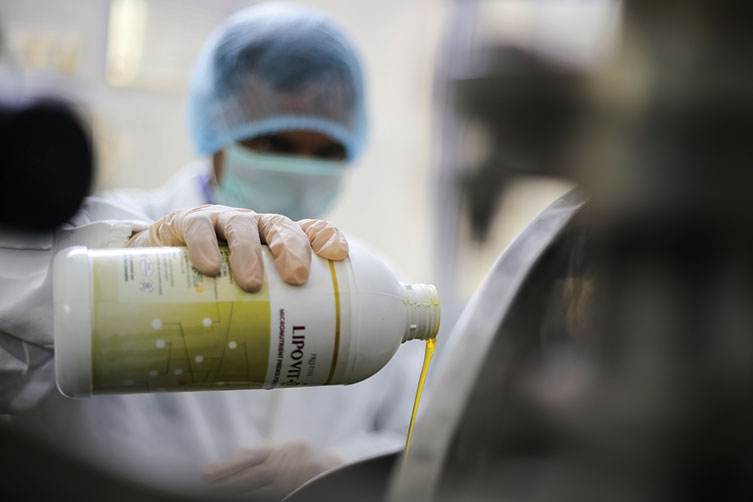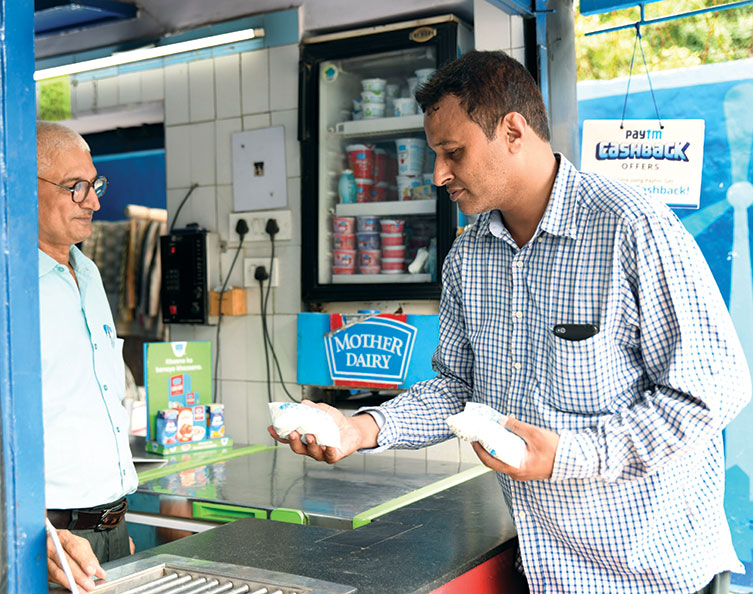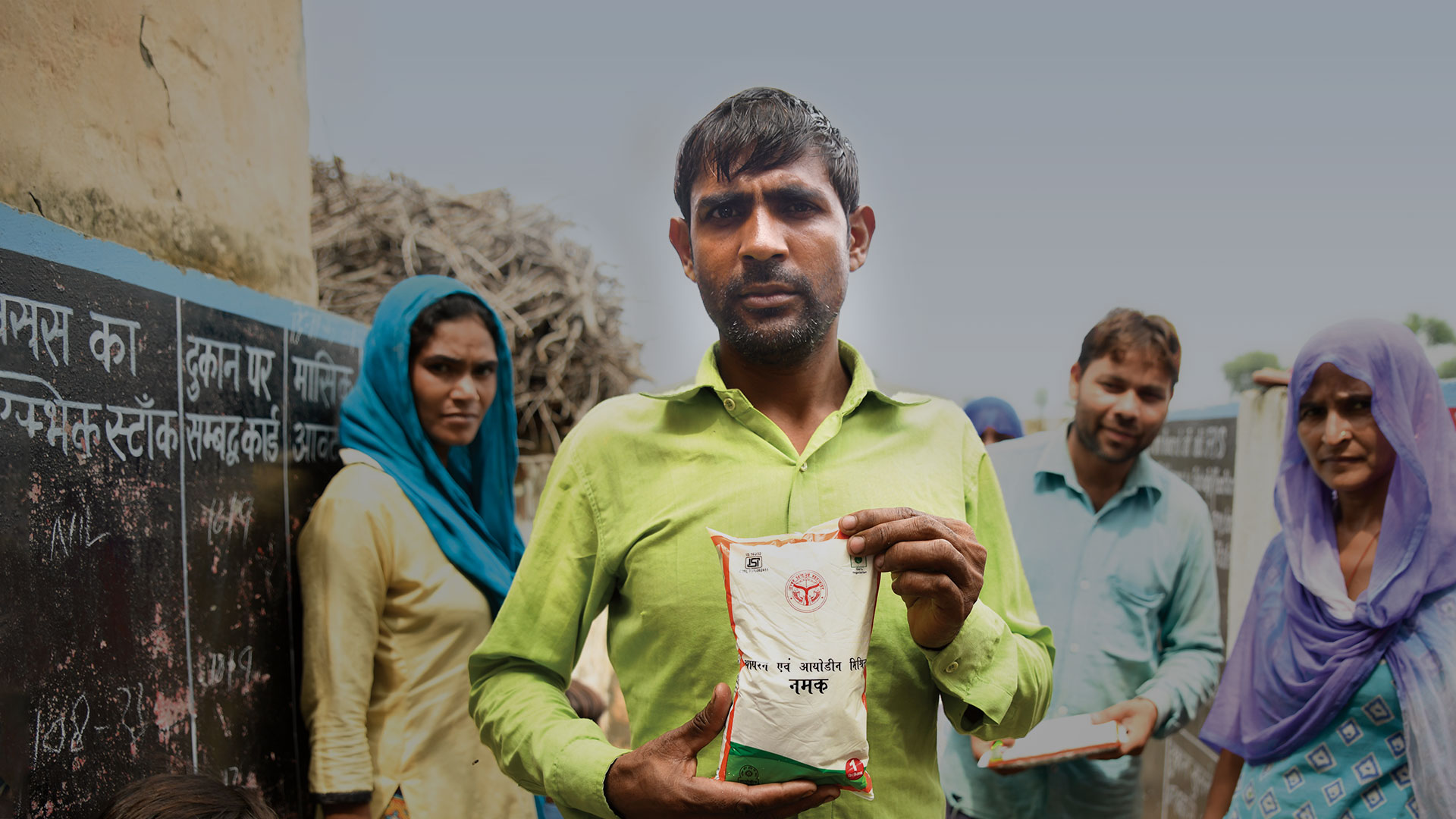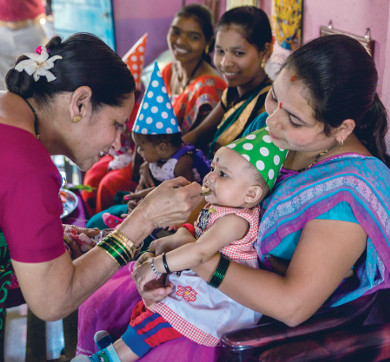November 2019 | 1368 words | 5-minute read
It delivers value for money, can be taken far and wide, and the efficacy of the exercise is undoubted. Food fortification is more than a fork in the road for an India driving further and faster forward than ever before to secure better nutritional outcomes. It is, rather, an essential ingredient in the spread of solutions being employed to realise the objectives of the National Nutrition Mission.
The surprise, if any, is that the country has not used the fortification of staple foods to a greater extent in combating the deficiency of vitamins and minerals that the majority of its citizens have to live unhealthily with. That is changing as the central government, through the Food Safety and Standards Authority of India (FSSAI), pushes the fortification envelope in collaboration with the food industry and civil society.
Five-course Solution
Salt, milk, edible oil, wheat flour and rice are the staples being fortified in India. Formalised through legislation in 2016, the effort has gained traction in the three years since. But the history of food fortification in India runs a lot longer. It began with the fortification of Vanaspati (hydrogenated vegetable fat) in 1953 and salt with iodine in 1962.
Despite proof of its effectiveness from across the world, dating back to Denmark in 1918 with margarine, Switzerland with salt and the United States with milk, both in 1923, there was no real momentum with food fortification in India, though. It’s different now.
The cost-benefit ratio favouring food fortification and the comparatively short time span required for benefits to accrue are the most compelling reasons for its adoption. Evidence of the crisis food fortification seeks to address is even more forceful.

Micronutrient deficiencies are widespread in India and nearly 75% of the population does not consume the required amount of essential vitamins and minerals.
The infusion of staple foods with these dietary essentials is crucial in battling what has been dubbed as ‘hidden hunger’. FSSAI’s executive director, Madhavi Das, is keen to emphasise that this is but one component of a larger ecosystem of wholesome nutrition. “We have initiated an ‘eat right movement’ and our message is simple: you need to eat safe and healthy,” she explains. “The safety piece is a precursor to wholesome food; you cannot divorce the two concepts.”
There are challenges aplenty in getting the fortification equation right for India, less so with technology than in bringing on board the organised food industry that has to execute the formula (the unorganised sector is a bridge too far at this point). The FSSAI method is to convince and cajole food businesses to join the Nutrition Mission, not enforce through regulatory diktat.
“Any legislation works as well or as badly as the level of acceptance in the system,” says Ms Das. “One of our most important efforts has been to ensure that the food distributed through government channels — midday meals in schools, the Integrated Child Development Services and the like — is fortified. It’s an uphill task because there are budgeting, logistics and other issues.”
FSSAI has crafted fortification standards for the five staples in the list, published technical manuals and created a logo (+F) to highlight the presence of premixed micronutrients in packaged food products. “We also encourage food businesses to share best practices,” says Ms Das. “The idea is to keep the conversation going.”
The alliance with the food industry reflects the collaborative culture on nutrition that FSSAI, among the most dynamic of government institutions, has cultivated since its inception in 2011. The India Nutrition Initiative (TINI), the flagship programme of the Tata Trusts in the sphere, has been committed partner in the venture alongside other foundations, nonprofits and civil society entities.
Early supporter
The Trusts have been lending a hand to food fortification from before the expanded model was rolled out. A team from the Trusts helped in setting the standards for fortification and the organization has backed FSSAI with advocacy, training initiatives, awareness campaigns and capacity building.
Notably, the Trusts have been supporting the Food Fortification Resource Centre, which is embedded in FSSAI and works with a spectrum of stakeholders to propagate and promote fortification.
“We realised that food fortification had not been fully utilised in India, though the country started out early with it,” says Rajan Sankar, the programme director for nutrition at the Trusts.

“Fortification is widely used across the world and with the changing structure of the food industry and changing behaviour patterns — the move away from subsistence agriculture, urbanisation, women in the workforce, etc — more people are dependent on packaged food. Scaling up fortification will increase the intake of essential nutrients in the population. That’s why we prioritised it.”
The 2016-19 period has been about growing and learning for the fortification programme and its successes have been considerable.
Close to 50% of all packaged edible oil sold in India is now fortified and this reaches 300 million people. Half of the milk produced by the organised sector has micronutrients added to it and double fortified salt is increasingly coming to the public’s notice. Wheat flour and, particularly, rice lag far behind but the gap should be closed in the days ahead.
The path to fortification is straightforward enough. The first question is whether a food commodity is fortifiable — dal (or lentils) are a tricky proposition — and, second, depending on how sophisticated and consolidated the relevant industry segment is, what proportion of it can be boosted with micronutrients.
On the technical side, there is no uniform method to add micronutrients to the five staples on FSSAI’s radar. With milk and oil, fortification is clear-cut and can be done on a large scale. Not so with wheat flour, rice and salt. These foods may be ready for a full dose of fortification but food businesses do not have the capacity and the technology is complicated. The most difficult bit, however, is ushering a bigger number of consumers into the fortification circle.
The layperson is still likely to miss the +F logo but that, too, will change as awareness campaigns gather strength and the symbol becomes more recognisable. “We have a long way to go,” says Nishita Panwar, a programme officer with TINI. “These are baby steps we are taking; we require more advertising and communications. The need is for consumers to look for the +F logo on the food packets they buy. That will happen sooner than later.”
Resource Force
The most steadfast supporter that the Food Safety and Standards Authority of India has for its fortification project is a small unit that resides within the organisation. The Food Fortification Resource Centre (FFRC) is advocate and enabler, focal point and lightning rod in a journey where many miles have been covered and where many more remain.
Established in 2016 and sustained with backing from the Tata Trusts, the 10-member FFRC has played a comprehensive part in finding food fortification a place at India’s nutrition table. That includes setting standards for fortification, offering technical assistance to food businesses, implementing government programmes and deepening public awareness.
“Our role has been to provide end-to-end support for food fortification on a scale that has not been seen previously,” says Rujuta Pandav, a deputy lead at the centre. “We have helped apply standards, benchmark and formalize procedures, brought the industry to our side and published technical inputs and manuals.”
En route the FFRC has worked closely with food businesses, various development partners and a bunch of central and state ministries. To build awareness at the ground level, it has reached out to consumers from cities, towns and villages, in malls, schools, online platforms, community gatherings and rural childcare centres, and through radio, TV and social media.
“An environment is being created to enable fortification,” says Rohini Saran, also a deputy lead with FRCC. “Our primary challenge is supply and demand. Food businesses sometimes argue that there is no demand for fortification. States and ordinary consumers, in turn, say fortified products are not available in the market.”
There are other challenges as well.
‘Fortification directives come from the central government but the supply chain in each state differs and nutrition is a state subject,” adds Ms Saran. “Also, the states face budget constraints. We need more resources and more cohesion.”
Originally published on the December 2019 issue of Horizons, the Tata Trusts' magazine













